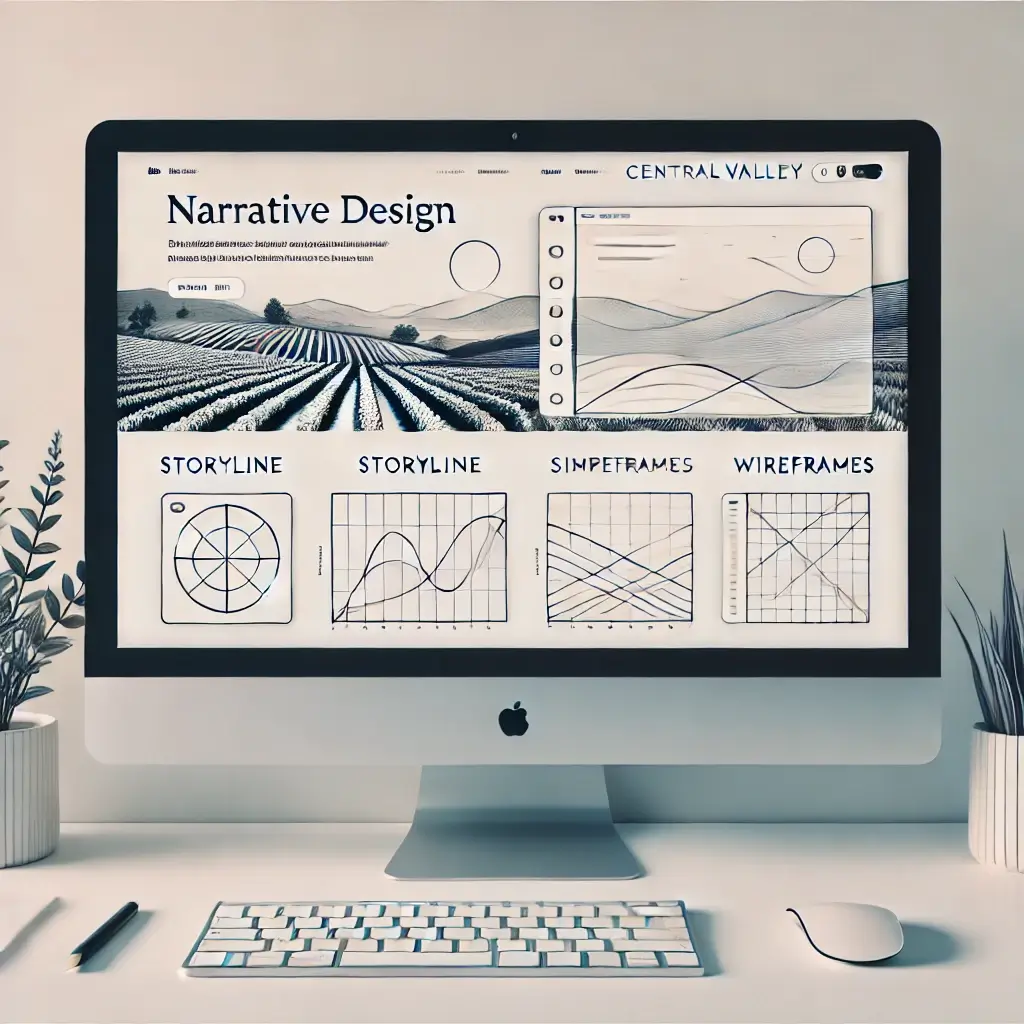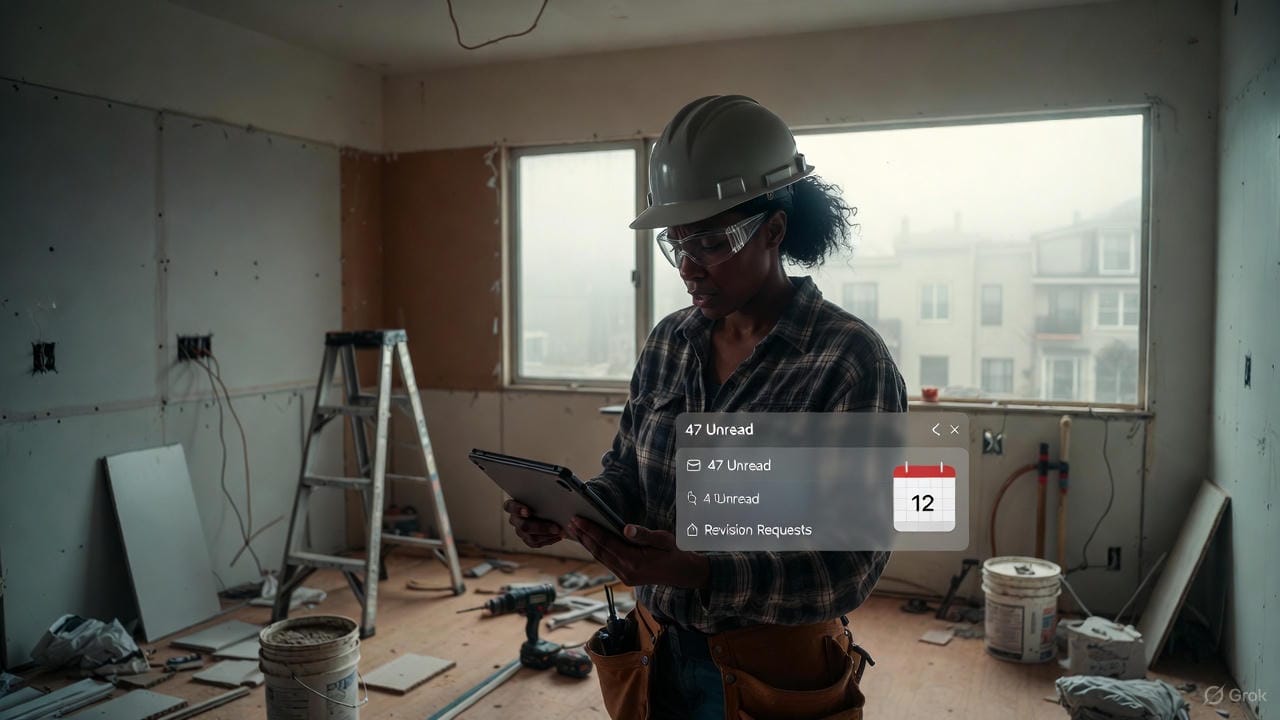“Design should be the bridge between a brand’s story and its audience.” – Chris Do
Introduction
Storytelling has been the main method of passing down knowledge through generations, making it one of the most powerful tools for communication and memory retention. Humans are wired to engage with stories, which is why storytelling in web design is so impactful, especially when aiming to engage users and drive conversions. I understand there are aspects of storytelling that we won’t cover in this blog like motion design, but my goal here today is to lay the infrastructure to build a story from scratch for your service or product. I won’t be able to get to everything – but I’ll cover enough for any brand manager or entrepreneur to craft a brand story that sells.
That said, today we’re focusing on the basics. So, pull out your marketing plan document, and read on – you might find ideas worth sharing with your team.
Web design isn’t just about adding color or visuals; it’s about positioning your message in a way that builds trust, differentiates, and drives engagement.
“It’s not just about the story you tell; it’s about how you craft and position it.” – Daniel Priestley
This framework is the foundation for today’s blog and the easy-to-use matrix that we’ll explore at the end.

Why Storytelling Matters in Web Design
1. Emotional Engagement: Building Trust
Storytelling isn’t just a buzzword; it’s a science-backed technique to build trust and create lasting connections. It allows users to not only engage with a brand’s website but also feel a part of its journey. By structuring narratives that resonate, brands can turn user interactions into long-term relationships. For sales and marketing managers in the Central Valley, storytelling means creating a website that doesn’t just attract users but compels them to act.
2. Differentiation Through Unique Storytelling
Differentiating your brand through storytelling helps to paint complex ideas in an easily understandable way. Similar to the way the Elves of Middle-Earth are recognized as the greatest swordsmiths in the Lord of the Rings, you could use this storyarc to position a CNC precision milling company as the go-to for precision machining. Stories bridge the gap between abstract ideas and tangible impact. Understanding how to make stories stick is the key to differentiation, and that’s what we’re uncovering today.

Structuring Your Website with Storytelling
Toy Story 3, one of the most beloved animated films, was rewritten over 100 times before it went into production. This relentless refinement process is a testament to the importance of structure in storytelling. There are many popular story arcs, but today, we’re focusing on the most common: the Hero’s Journey.
This arc consists of a few key components: the beginning, the pivotal plot twist, the build-up to the climax, and the resolution. Along this journey, the hero encounters tools, friends, and mindsets that help them achieve milestones they couldn’t reach alone. In this blog, we’ll explore how to transform your people, products, and services into the tools and allies your customers need to succeed.
Starting with the End: Reverse-Engineering the Story
Every great story starts with the end in mind. The hero (your customer) achieves a life-changing result by using your service or product, which is the climax of your web narrative. In web design, this means identifying the benefits of your service and the use cases that allow your target customer to reach new milestones.
- The Ending: Your website should start by showcasing the transformative results your services offer. Think of this as the final victory at the “top of the mountain,” where the customer has gained the abilities or results they didn’t have before. Highlight the features of your service that make this change possible, framing them as the tools the hero uses.
- The Middle: Here, your story shows the journey from hardship to progress. Users should feel the momentum shift as they navigate your site, with clear markers of success along the way. Visuals, testimonials, and case studies demonstrate how customers begin to experience change as they engage with your brand.
- The Beginning: Now, circle back to where it all started. This is where your potential customer first becomes aware of a problem they didn’t know they had. Your messaging should reflect that moment of realization, helping users identify with the pain point and motivating them to seek a solution.
Breaking Down the Story Elements
Characters
Introduce your website’s “characters” early on—these can be real customers, community members, or even your team. Showcasing real people makes the cause relatable and adds an urgent, human touch.
Conflict
Clearly outline the problem your service addresses. Frame it within a larger narrative of struggle and resilience, aligning with the Hero’s Journey. For example, highlight how sales teams in Central Valley struggle to engage leads on static websites, positioning your service as the guide that helps overcome this challenge with CRM (customer relationship management) integrations baked-in.
Resolution
Illustrate the positive changes your service brings, focusing on clear achievements and ongoing efforts. SELL THE VACATION. This is where your testimonials, success stories, and case studies come into play, demonstrating the tangible benefits of your solutions.
Incorporating these elements into web design requires a blend of visual storytelling, interactive elements, and emotive content that together create a cohesive and immersive experience for the user.

Enhancing Storytelling with Micro-Interactions
While major visuals drive engagement…
These include hover effects, parallax scrolling, slide-in sections, scrolling review bars, and multistep forms. When users interact with dynamic elements, they feel a sense of progress, enhancing their overall experience. For example:
- Hover Effects: Change button colors or sizes to signal clickability.
- Parallax Scrolling: Create depth and draw users deeper into the narrative.
- Introduce new information without overwhelming users by using slide-in-sections.
- Scrolling Review Bars: Display user reviews as users scroll, reinforcing social proof.
By integrating these subtle touches, you add layers to the storytelling stack that keep users engaged, making the website feel more interactive and alive.
Character Building: BE, DO, HAVE – Framework
The BE, DO, HAVE framework is not just a storytelling structure; it’s a mindset shift that guides users from where they are now (at the “bottom of the mountain”) to where they aspire to be (at the top). To unpack this further, consider the limiting beliefs that hold your target audience back. For example, they may feel they lack the skills or resources to achieve success.
The BE, DO, HAVE equation helps align their mindset with the steps they need to take:
- BE: Who do users need to become to achieve their goals? What version of their future-self are they looking to embody? They might need to adopt new strategies or embrace a growth mindset.
- DO: What actions do users need to take? These actions should be clearly laid out, guiding users through each phase of the journey with clear CTAs (call to actions).
- HAVE: What are the desired results? Show the benefits that come from taking these actions, creating a sense of achievement that aligns with users’ aspirations.
Follow-up: Reverse-engineer the gap between your customer’s current identity and the one they need to adopt to reach their goals. This requires building an emotional connection that addresses their fears and instills confidence, motivating them to act.
Psychological Principles in Storytelling Design
Understanding how people think is crucial for effective storytelling. Here are three core principles:
- Social Proof: Use testimonials, case studies, and reviews throughout your website. When users see that others have succeeded, they are more likely to trust your service.
- Cognitive Load: Reduce complexity by breaking information into digestible pieces. Clear headings, concise language, and supporting visuals prevent users from feeling overwhelmed. The average American sees over 10k ads a month, so help them with this fatigue and make it easy to understand.
- Perception of Choice: Guide users through a structured decision-making process, offering them clear paths at every stage. This not only makes navigation intuitive but also increases the likelihood of conversion.
Enhancing with Data Visualization
Data visualization helps translate complex concepts into clear, understandable visuals, making your story more compelling. For Central Valley businesses that handle large data sets—like agriculture or tech—data visuals can simplify analytics, revealing key insights. For example, integrating charts or interactive infographics can help users grasp trends and results quickly.
Additionally, platforms like ChatGPT can aid in data visualization by allowing users to copy and paste their analytics for quick analysis or upload spreadsheets to generate visual insights. This makes it easier for businesses to refine their strategies and improve outcomes based on data-driven storytelling.
Conclusion: Transform Your Website with Storytelling
Storytelling in web design isn’t just about aesthetic appeal; it’s a tool for driving deeper engagement and conversions. By using structured narratives, interactive elements, and psychological principles, you can transform your website into a compelling journey for users.
Whether you’re a sales manager or a marketing professional in the Central Valley or beyond, these strategies can help you craft a website that not only attracts visitors but converts them into loyal customers. Ready to elevate your website with storytelling?
Are you a startup or growing business looking to enhance your digital presence without breaking the bank? Our services offer a cost-effective alternative to hiring an unreliable, overseas 3rd party. We provide emergency call support & comprehensive web design, SEO, and CRM integration at a fraction of the cost of other solutions. Perfect for businesses in their early stages or those seeking reliable, professional web services without the overhead.
Want to start crafting your own narrative-driven website? Share the Storytelling Matrix below with your team, and start building a story that drives engagement and delivers results. If you’re ready for a consultation or want to explore how we can help, contact J Williams Designs today!
Simple Storytelling-Matrix for Services
| ICP | Service/ Product | Features | Benefits for Customer | Life Change/ New Ability (Ending) | Challenges/ Struggles (Middle) | Awareness of Issue (Beginning) |
| ICP1 | ||||||
| ICP2 | ||||||
| ICP3 |



